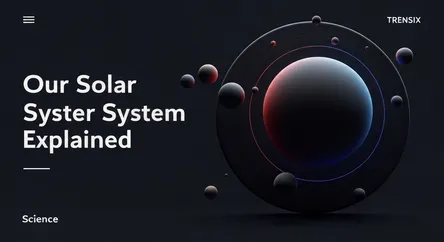Science
Our Solar System Explained

Discover our cosmic neighborhood! A simple guide to the Sun, the eight planets, and the celestial bodies that make up our amazing solar system.
What is it?
The solar system is our home in the cosmos—a gravitationally bound system comprising the Sun and everything that orbits it. At its center is the Sun, a star that accounts for over 99.8% of the system's total mass. Orbiting this stellar giant are eight planets: Mercury, Venus, Earth, Mars, Jupiter, Saturn, Uranus, and Neptune. Beyond the planets lie dwarf planets like Pluto, countless asteroids in the asteroid belt, icy comets, and the vast Kuiper Belt. This entire cosmic neighborhood is held together by the immense force of the Sun's gravity.
Why is it trending?
Interest in our solar system is constantly renewed by incredible scientific advancements. Missions like the James Webb Space Telescope deliver breathtaking images of our planetary neighbors, while rovers on Mars hunt for signs of past life. The renewed push for lunar exploration through programs like Artemis and the rise of commercial spaceflight have brought planetary travel closer to reality. Furthermore, the ongoing search for potentially habitable environments on moons like Europa and Enceladus keeps our solar system at the forefront of scientific discovery and public imagination.
How does it affect people?
The solar system's influence is fundamental to our existence. The Sun's energy powers Earth's climate and sustains all life. Our understanding of orbital mechanics is crucial for modern technology, including the GPS satellites that guide us and the communication networks that connect us. Studying celestial bodies helps us predict space weather and develop strategies to protect our planet from potential asteroid impacts. Ultimately, exploring our solar system satisfies a deep-seated human curiosity, inspiring us to look up and ponder our place in the vast universe.